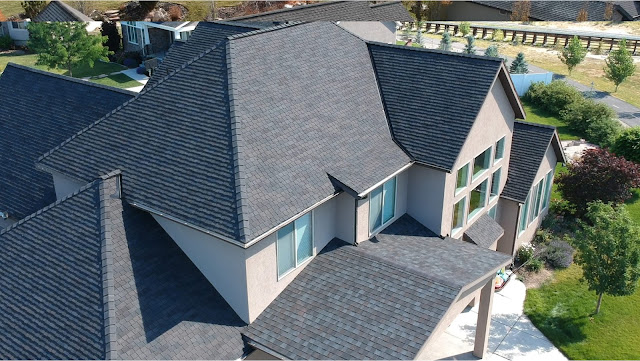The characteristics of a roof are dependent upon the purpose of the building that it covers, the available roofing materials and the local traditions of construction and wider concepts of architectural design and practice and may also be governed by local or national legislation.
>> Related Post: What You Need To Know About Roof Maintenance Contractors?
In most countries a roof protects primarily against rain. A verandah may be roofed with material that protects against sunlight but admits the other elements. The roof of a garden conservatory protects plants from cold, wind, and rain, but admits light.
If you have a decent pair of binoculars and know where to look, you'll be able to see these issues.
Call Swadley Roof Systems immediately if you notice any of these signs. They can do a comprehensive examination and execute any required repairs.
1. Damaged Flashing
We use flashings, which are thin pieces of metal, to form a water-resistant barrier along the joints and valleys of your roof.
Cracks in the flashing allow water to enter your roofing system, which is why they are so important. Flashing damaged by weather or rust has to be repaired immediately.
Flashing protects some of the most vulnerable parts of your roof, any damage to flashing is cause for concern. When flashing cracks or is bent upward, moisture is able to run inside to the roof seams. This poses an especially large problem during heavy rains.
While your roof is protected by underlayment (a membrane or roofing felt), some roofing materials will deteriorate if faced with ongoing moisture. This will cause a leak to form.
>> Related Post: Questions To Ask Your Commercial Roofing Contractor.
Moisture damage is particularly annoying because it may run inside the flashing and create damage far away from the entry point. A full inspection of flashing is often needed to pinpoint the leak’s origin.
2. Cracked Vent Booting
If you see little pipes sticking out of your roof, this is a sign that your roof vents need repair. Vent boots are used to keep the pipes from peeking out of the ceiling.
Sadly, this vent booting may degrade with time, resulting in fractures in the structure.
Of these, a very common leak point is at the plumbing vents which penetrate the roof line. These plumbing vents, part of the plumbing system, have a "boot" or a "jack" (or a host of other commonly used names...) that acts as a sort of "shirt" around the base of the plumbing vent.
The "necks" on these (the rubber part) has a tendency to start cracking, generally around 10/11 to 15 years. It would be rare for me to go to a home, for example, that has a 14 year old roof and find that the plumbing vent boots (the necks on them) in good condition.
>> Related Post: Tips On Choosing A Metal Roof Contractor.
Once these "necks" start to crack, the barrier between your roof and your attic space (if not the inside of the home itself) is compromised. Water from rain can begin to travel down the vent and into the attic, getting the insulation wet (at best), or leading to revealed leaks on the inside of the home itself.
Snow creates a bigger problem, because the roof only needs a couple of inches to end up sitting on the vent boot above the crack, leading to more direct and intense leaking.
3. Broken or Missing Shingles
Shingles that are broken or missing might be seen from the ground.
Give Swadley Roof Systems a call if you notice any discolored areas on your roof or shingles strewn about your yard.
>> Related Post: Advantages of solar roof systems that you should consider.
Heavy rains and high winds may have damaged or blown away your shingles.
Conclusion
Swadley Roof Systems offers the best roofing services in the Houston, Austin, San Antonio and Dallas area.
- Tel: 832-559-8463
- Email: info@swadleyroofsystems.com
- Location: 17413 FM 2920 Suite O Tomball, TX 77377
- Facebook: Fanpage Swadley Roof Systems
- Website: https://www.swadleyroofsystems.com/







0 Comments
Đăng nhận xét